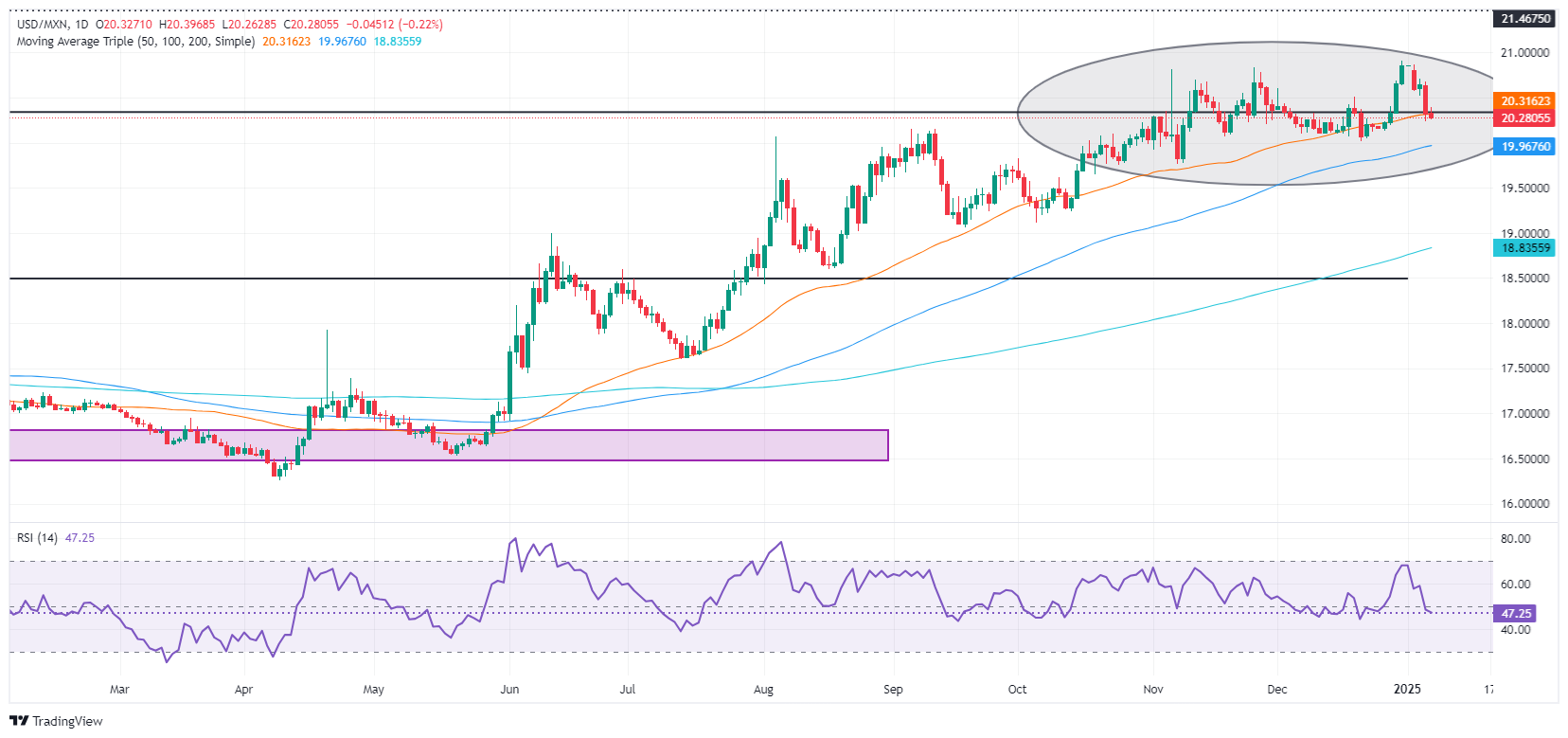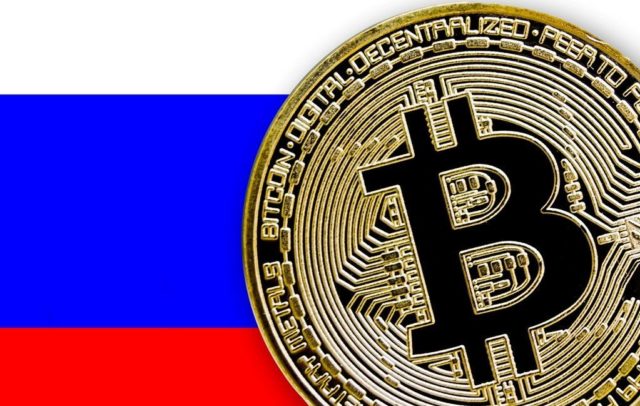- The Mexican Peso shows resilience, falling marginally to 20.29 despite strong US service sector growth and labor market data.
- Trump denies plans for reduced tariffs, boosting the US dollar, but the peso holds its ground against market fluctuations.
- CPI data from Mexico is awaited as US economic indicators continue to shape Fed rate expectations.
The Mexican peso posted minimal gains against the US dollar on Tuesday after data suggested the United States (US) economy remained strong, as traders postponed the Federal Reserve’s first interest rate cut ( Fed) until July. At the time of writing, USD/MXN is trading at 20.27, down 0.16%.
Financial markets continued to reflect a positive tone after The Washington Post published an article mentioning that US President-elect Trump’s team is working to reduce tariffs that “will only cover critical imports.” Although Trump refuted the article and boosted the Dollar, the Mexican Peso dismissed those comments and appreciated against the US Dollar.
On the data front, the Institute of Supply Management (ISM) revealed that business activity in the services sector improved markedly. At the same time, the survey showed that a subcomponent of the price-linked Purchasing Managers’ Index (PMI) reached its highest level since 2023.
At the same time, the US Bureau of Labor Statistics revealed that job vacancies exceeded the 8 million threshold, indicating that the labor market is strengthening.
In Mexico, the economic agenda remained absent on Tuesday and will resume on Thursday. The Consumer Price Index (CPI) will be revealed, and is expected to continue its downward trajectory towards the Bank of Mexico’s (Banxico) 3% target.
On Wednesday, the US economic calendar will include the ADP National Employment Change, Initial Jobless Claims numbers and minutes from the latest Fed meeting.
Daily Market Summary: Mexican Peso Consolidates Ahead of Mexico CPI Data
- The US Dollar Index (DXY) rises 0.17% to 108.46, a tailwind for the exotic pair USD/MXN.
- The ISM Services PMI in December rose to 54.1, beating forecasts of 53.3 and November’s reading of 52.1.
- The Job Openings and Labor Turnover Survey (JOLTS) revealed that job vacancies increased from 7.839 million to 8.098 million in November.
- According to the Bureau of Economic Analysis, the US trade deficit widened in November, reaching $78.2 billion compared to $73.6 billion in October.
- Imports rose 3.4% to $351.6 billion from $339.9 billion, while exports rose 2.7% to $273.4 billion from $266.3 billion.
USD/MXN Technical Outlook: Mexican Peso Remains Contained Near 20.30
USD/MXN remains tilted in a vague direction, snaking around the 50-day SMA at 20.27. The Relative Strength Index (RSI), despite turning flat in bearish territory, indicates that the exotic pair could consolidate, awaiting a new catalyst.
Therefore, if USD/MXN falls below the 50-day SMA, the next support would be the 20.00 figure. A break of the latter will expose the 100-day SMA at 19.91, followed by the 19.50 figure.
Conversely, if buyers step in and lift USD/MXN above 20.50, the next ceiling level would be the yearly high of 20.90, before 21.00 and the March 8, 2022 peak of 21.46.
Mexican peso FAQs
The Mexican Peso (MXN) is the most traded currency among its Latin American peers. Its value is largely determined by the performance of the Mexican economy, the policy of the country’s central bank, the amount of foreign investment in the country and even the levels of remittances sent by Mexicans living abroad, particularly in the United States. . Geopolitical trends can also affect the MXN: for example, the nearshoring process (or the decision by some companies to relocate manufacturing capacity and supply chains closer to their home countries) is also seen as a catalyst for the currency. Mexican, as the country is considered a key manufacturing center on the American continent. Another catalyst for the MXN is oil prices, as Mexico is a key exporter of the raw material.
The main objective of Mexico’s central bank, also known as Banxico, is to keep inflation at low and stable levels (at or near its target of 3%, the midpoint of a tolerance band between 2% and 4%. %). To do this, the bank establishes an appropriate level of interest rates. When inflation is too high, Banxico will try to control it by raising interest rates, which makes borrowing more expensive for households and businesses, thus cooling demand and the economy in general. Higher interest rates are generally positive for the Mexican Peso (MXN) as they lead to higher yields, making the country a more attractive place for investors. On the contrary, lower interest rates tend to weaken the MXN.
The publication of macroeconomic data is key to evaluating the state of the economy and can have an impact on the valuation of the Mexican peso (MXN). A strong Mexican economy, based on high economic growth, low unemployment and high confidence is good for the MXN. Not only does it attract more foreign investment, but it may encourage the Bank of Mexico (Banxico) to raise interest rates, particularly if this strength is accompanied by high inflation. However, if economic data is weak, the MXN is likely to depreciate.
As an emerging market currency, the Mexican Peso (MXN) tends to rise during periods of risk, or when investors perceive overall market risks to be low and are therefore eager to engage in investments that carry higher risk. . Conversely, the MXN tends to weaken in times of market turbulence or economic uncertainty, as investors tend to sell riskier assets and flee to more stable safe havens.
Source: Fx Street
I am Joshua Winder, a senior-level journalist and editor at World Stock Market. I specialize in covering news related to the stock market and economic trends. With more than 8 years of experience in this field, I have become an expert in financial reporting.








